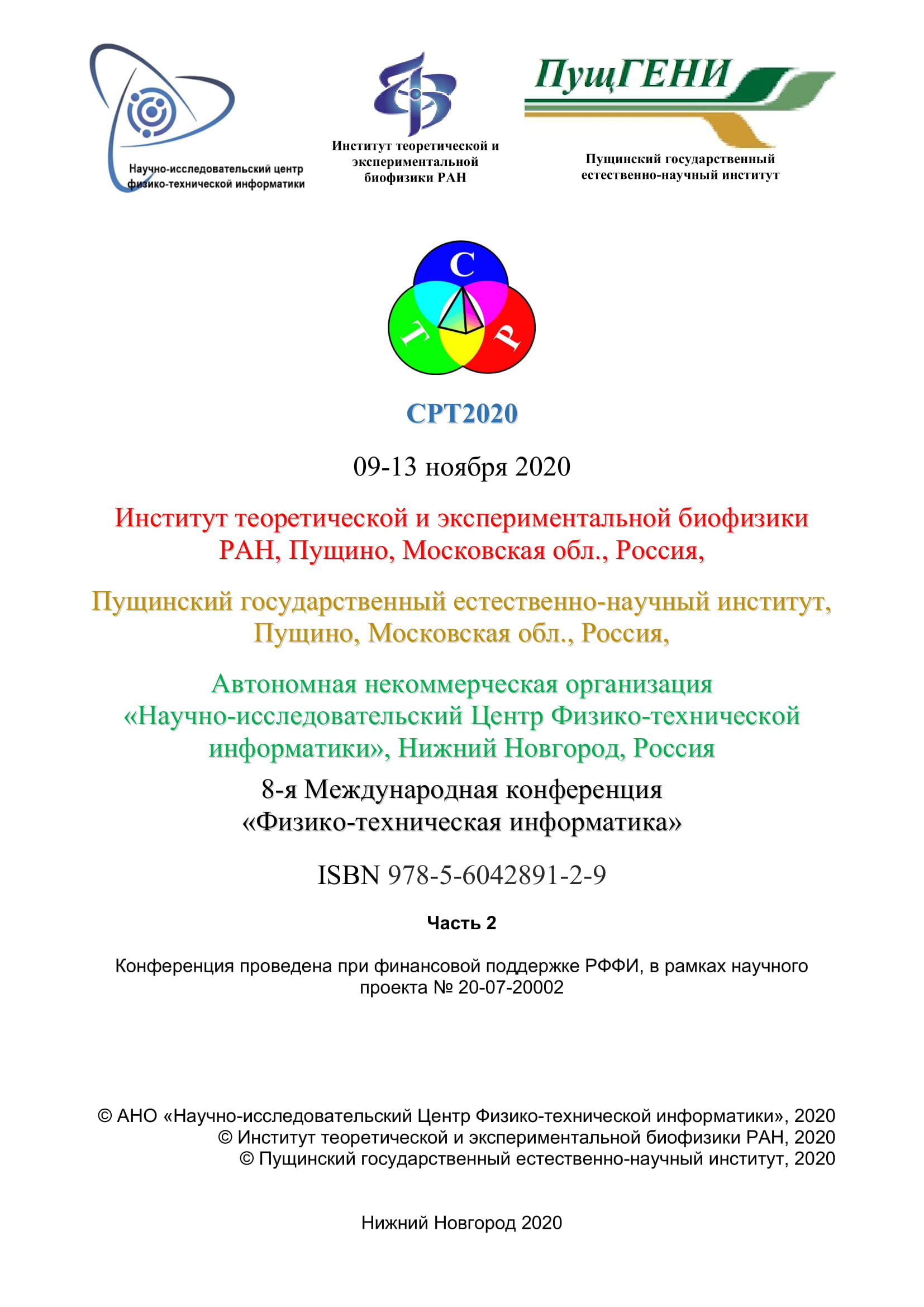г. Москва и Московская область, Россия
Россия
ОКСО 45.03.03 Фундаментальная и прикладная лингвистика
Объектом исследования при написании работы послужил корпус текстовых данных, собранных вместе с научным руководителем и алгоритмы обработки естественного языка анализа. Поток гипотез был проверен на текстах научных публикаций по компьютерным наукам (computer science) с помощью ряда экспериментов по моделированию, описанных в этой диссертации. Предметом исследования являются алгоритмы и результаты работы алгоритмов, направленные на предсказание перспективных тем и терминов, появляющихся в процессе времени в научной среде. Результатом данной работы является совокупность моделей машинного обучения, с помощью которых проведены эксперименты по выявлению перспективных терминов и семантических связей в корпусе текста. Полученные модели могут быть использованы для семантической обработки и анализа других предметных областей.
цитирование, импакт-фактор, научные публикации, машинное обучение
1. Bethard S., Jurafsky D. Who should I cite: learning literature search models from citation behavior. In Proceedings of the 19th ACM international conference on Information and knowledge management, pages 609-618. ACM, 2010.
2. Pan, R. K. & Fortunato, S. (2014). Author Impact Factor: tracking the dynamics of individual scientific impact. Scientific reports, 4, 4880. (Импакт-фактор автора: отслеживание динамики индивидуального научного воздействия).
3. Petersen, A. M. et al. Reputation and Impact in Academic Careers arXiv:1303.7274.
4. Web of knowledge. http://wokinfo.com/ (2014). Accessed: 2014-02-01.
5. Tomas Mikolov, Ilya Sutskever, Kai Chen, Greg Corrado, Jeffrey Dean. Distributed Representations of Words and Phrases and their Compositionality (2013) https://papers.nips.cc/paper/5021-distributed-representations-of-words-and-phrases-and-their-compo.
6. Ashish Vaswani, Noam Shazeer, Niki Parmar, Jakob Uszkoreit, Llion Jones, Aidan N. Gomez, Lukasz Kaiser, Illia Polosukhin. Attention Is All You Need https://arxiv.org/abs/1706.03762.
7. Yan R., Huang C., Tang J., Zhang Y., Li X. To Better Stand on the Shoulder of Giants, JCDL. 2012. Available at: http://keg.cs.tsinghua.edu.cn/jietang/publications/ JCDL12-Yan-et-al-To-Better-Stand-on-the-Shoulderof-Giants.pdf.
8. Ho Qirong, Eisenstein J., Xing E. P. 2012. Document hierarchies from text and links. In Proceedings of the 21st international conference on World Wide Web, pages 739-748.
9. Nicolaisen J. Citation Analysis // Annual Review of Information Science and Technology. - 2007. - Vol. 41, No.1. - P. 609-641. -http://doi.org/10.1002/aris.2007. 1440410120.
10. Seglen P. O. Why the impact factor of journals should not be used for evaluating research// BMJ: British Medical Journal. - 1997.- No. 314 (February).- P. 498-502. - http://dx.doi.org/10.1136/bmj.314.7079.497.
11. Кнот, П., Германнова, Д. На пути к семантометриям: новый семантический критерий сходства для оценки вклада научной публикации. Междунар. форум по информ. 2015. Т. 40. № 1, с. 3-8.
12. Porter A. L., Rafols I. 2009. Is science becoming more interdisciplinary? Measuring and mapping six research fields over time. Scientometrics 81, 3: 719-745. http://doi.org/10.1007/s11192-008-2197-2.
13. Hofmann D., Cohn T. 2001. The missing link a probabilistic model of document content and hypertext connectivity. In Proceedings of the 2000 Conference on Advances in Neural Information Processing Systems. The MIT Press, pages 430-436.
14. Erosheva E., Fienberg S., Lafferty J. 2004. Mixedmembership models of scientific publications. Proceedings of the National Academy of Sciences of the United States of America, 101(Suppl.1):5220-5227.
15. Shi X., Tseng B., Adamic L. Information Diffusion in Computer Science Citation Networks. arXiv:0905.2636v1 [cs.DL] 15 May 2009.
16. PobiedinaN.,IchiseR.PredictingCitationCountsfor Academic Literature Using Graph Pattern Mining. International Conference on Industrial, Engineering and Other Applications of Applied Intelligent SystemsIEA/AIE2014:ModernAdvancesinApplied Intelligence.
17. Priem J., Taraborelli D., Groth P., Neylon C. Altmetrics: A manifesto, 2010. http://altmetrics.org/manifesto/.
18. Sutherland W. J., Goulson D., Potts S. G., Dicks L. V. Quantifying the impact and relevance of scientific research. PLoS ONE, 6(11), 2011. http://doi.org/10.1371/journal.pone.0027537.
19. Whalen R., Huang Y. et al. Citation distance: Measuring changes in scientific search strategies. In Proceedings of the 25th International Conference Companion on World Wide Web, WWW ’16 Companion, pages 419-423, Republic and Canton of Geneva, Switzer.
20. Porter A. L., Rafols I. 2009. Is science becoming more interdisciplinary? Measuring and mapping six research fields over time. Scientometrics 81, 3: 719-745. http://doi.org/10.1007/s11192-008-2197-2.
21. Shiji Chen, Cl´ement Arsenault, Vincent Larivi`ere. 2015. Are top-cited papers more interdisciplinary? Journal of Informetrics 9, 4: 1034-1046. http://doi.org/10.1016/j.joi.2015.09.003.
22. Alam H., Kumar A., Werner T., Vyas M. Are Cited References Meaningful? Measuring Semantic Relatedness in Citation Analysis. In: Proc. of the 2nd Joint Workshop on Bibliometricenhanced Information Retrieval and Natural Language Processing for Digital.





